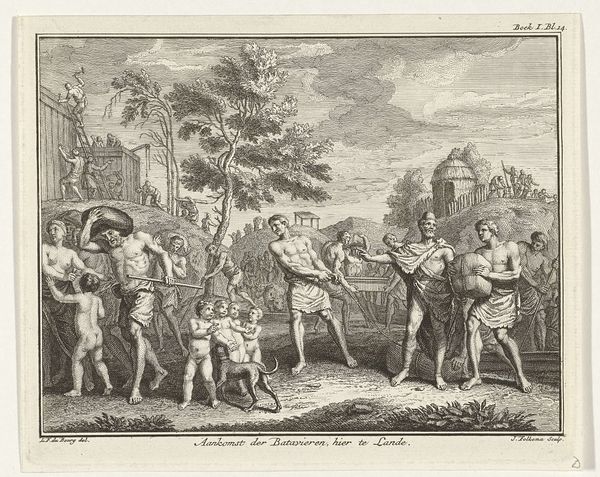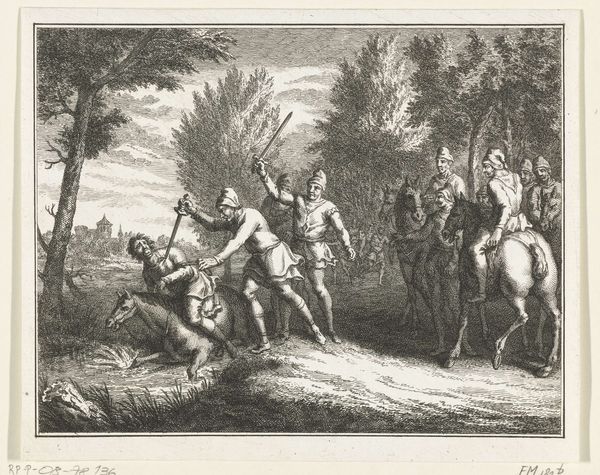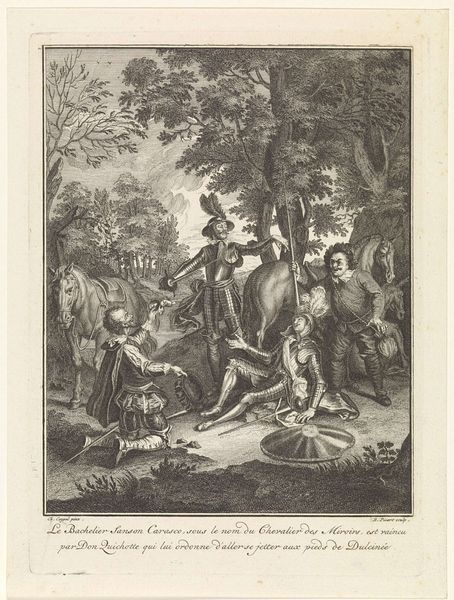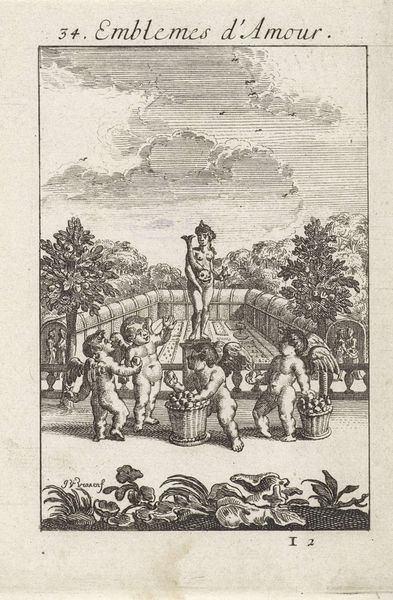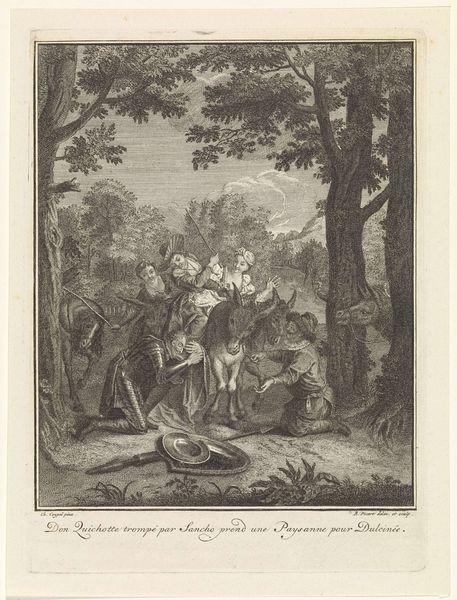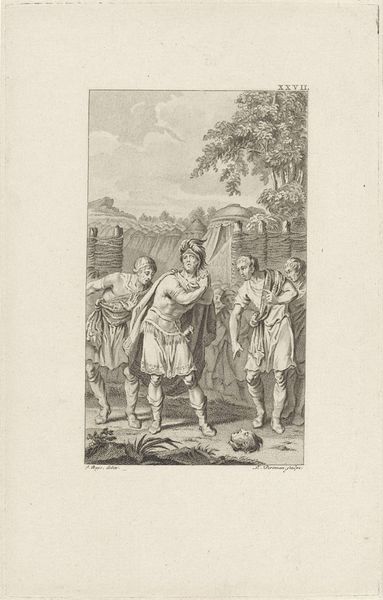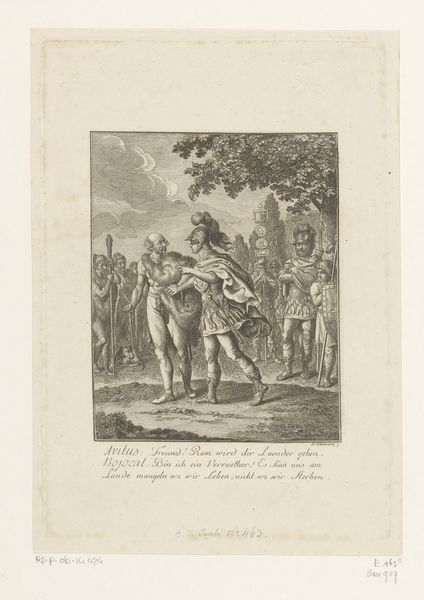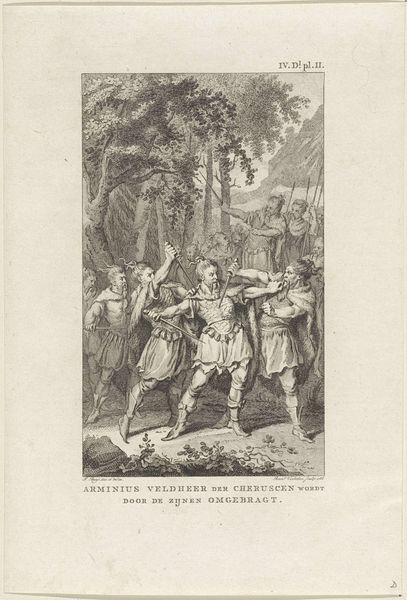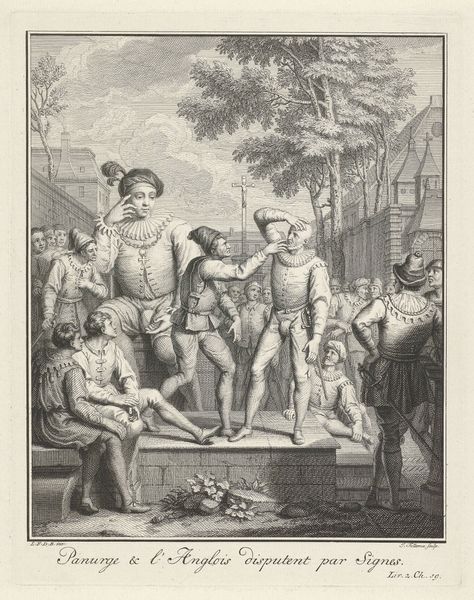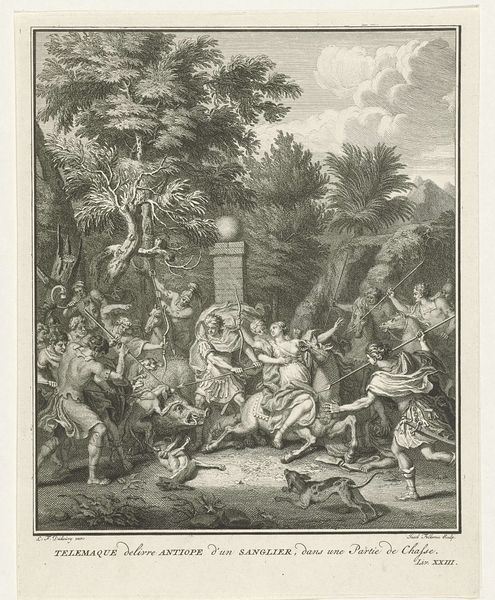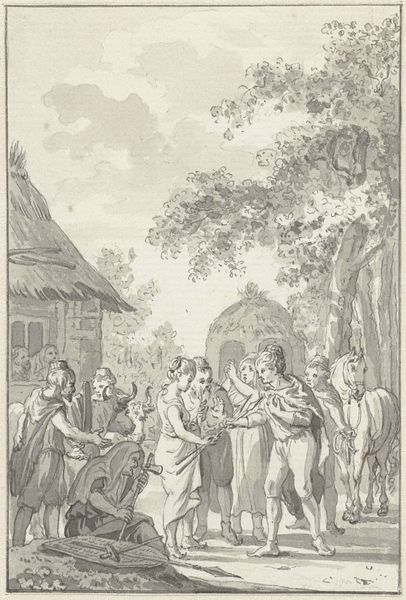
Dimensions: height 147 mm, width 101 mm
Copyright: Rijks Museum: Open Domain
Curator: I’m immediately drawn to the stillness and order in this print. Despite the active scene, it feels incredibly balanced and almost serene. Editor: Indeed! This engraving by Harmanus Vinkeles, dated 1786, is entitled "Huwelijksplechtigheid der Bataven," or "The Wedding Ceremony of the Batavians." It currently resides here at the Rijksmuseum. Vinkeles offers us a window into an imagined past. Curator: The idealized past! What catches my eye are the interlocking hands of the couple— such a potent, ancient symbol of union. Even their posture mirrors one another. But who are the Batavians, and why depict their wedding? Editor: The Batavians were an ancient Germanic tribe that lived in the Rhine delta, in what is now the Netherlands. In the late 18th century, there was a growing interest in this "national" origin story. Depicting their wedding ceremonies allowed artists and their patrons to invent traditions and, in so doing, construct a specific vision of Dutch history that emphasized noble origins. The image became important for the Dutch national identity, loaded with symbols that served that goal. Curator: It's fascinating how seemingly simple imagery could carry such heavy cultural weight. Looking closely, there are ceremonial objects and garments, each laden with symbolic meaning that I can't help but to assume has been meticulously constructed. Are there other figures that might clarify our understanding? Editor: Consider the figure to the left, seemingly weighed down and holding on to what appears to be a shield, or even the elder presenting what appears to be the horn of an animal. Their posture expresses deep concentration and might relate back to historical marriage rites, such as handfasting. The attire is deliberately archaic to communicate history, even if it doesn’t completely correspond with archaeological records. Curator: It highlights how history is not just a record of facts, but it can be a powerful tool for shaping societal beliefs. This print isn’t simply showing a wedding; it’s constructing an origin myth, idealizing a foundational moment to promote a specific view of Dutch identity. Editor: I concur entirely. This image reveals how history and iconography, particularly within a museum setting, operate to construct collective memories and influence public perception. It leaves me considering what foundational moments we choose to celebrate today and the impact those choices will have on future narratives. Curator: A thoughtful conclusion, emphasizing the powerful impact art can have and it’s constructed symbols that reflect how we might view ourselves as a culture, not simply the history behind.
Comments
No comments
Be the first to comment and join the conversation on the ultimate creative platform.

